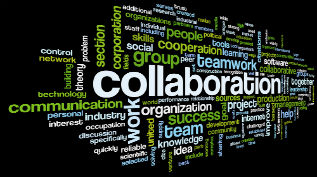How Can Community Foundation Staff Prepare for and Manage Family Dynamics?

As a community foundation looking to engage families, what does an agenda look like for the initial family meetings? What are some of the ways you have trained your staff around facilitation and family dynamics?
This month we are delighted to feature a question recently asked during our June webinar, Ten ways philanthropic families work with community foundations. This webinar provides reminders, tips, and peer advice for families, donors, and community foundation staff along with the stories of how two donor families have made the most of their long-time relationship with their local community foundation. The featured presenters are Lauren Amos from the Wish Foundation, David Barrett from the Gene B. Glick Company, Audrey Jacobs from The Center for Family Philanthropy for The Community Foundation for Greater Atlanta; and Rob MacPherson from the Central Indiana Community Foundation.
Our webinar participant inquired about the following:
“As a community foundation looking to engage families, what does an agenda look like for the initial family meetings? What are some of the ways you have trained your staff around facilitation and family dynamics?”
Responses from our June webinar panelists included:
We will have initial family meetings with one individual, a couple, or a multi-generational family. When approaching initial family meetings, we have a very specific agenda with topics appropriate for the particular family. But, typically, storytelling is great, and has served as an ice-breaker to allow us to get a sense of who this family is and their history. We’ll do what we call a “philanthropy biography.” We’ll ask them questions like, “Who is the most generous person you remember from your childhood?” or “What is your first memory of money as a kid, or giving money away, or receiving something very generous from somebody else in your neighborhood as a kid?”
Then we go into a values, interests, purpose exercise based in part on Tracy Gary’s book, Inspired Philanthropy. Aside from grantmaking, giving, or what some of their interest areas are, we give them 40 values words and ask them to describe their personal principles and the way they live their life. Is it generosity? Is it equality? Is it understanding? Is it parity or justice? We then continue to talk about values and why those are important to us. Then we bring in the whole interest area. What do you want to change, K through 12 education, dogs and cats, GLBT, symphony orchestras, the arts, environment? Then we create the mission and purpose statement, matching the values and the interests. For example, you could say, “Because I believe in equality and justice and fairness, and I want to affect the education and the homeless, we strive to speak for the voiceless.” So, we’ll craft a mission statement in that sense.
I make every single one of my staff members go through that with their spouse or their family, and we do a lot of peer learning and collective internal training that way. We read a lot, again the Tracy Gary book, and I have new staff members shadow when that’s appropriate. I’ve learned the most about family dynamics from Kelin Gersick and his book, “Generations of Giving.” A number of years ago, Kelin was instrumental in helping us understand family dynamics.
—Rob MacPherson, vice president for
Development, Central Indiana Community Foundation
By having an internal mission and staff dedicated to it, you’re able to look for ways to improve further engagement in ways such as, surveying the family on an annual basis. We’re always looking for different opportunities to meet our internal mission. If you combined the two, you might not give it the attention that it deserves.
—Audrey Jacobs, director of The Center for Family
Philanthropy, The Community Foundation for Greater Atlanta
Make sure to register for our monthly webinars!
If you currently do not have access to our webinars, find out how you can take advantage of our Knowledge Center here.
